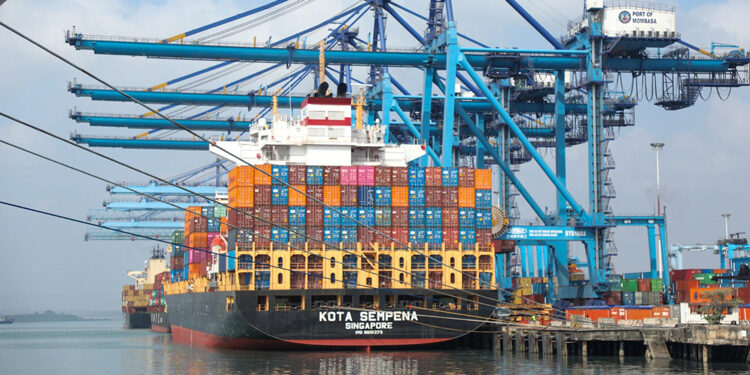Kenya is embarking on a bold strategy to ease congestion at the Port of Mombasa by positioning Lamu Port as a dedicated hub for transshipment cargo. This move, spearheaded by the Kenya Ports Authority (KPA) and the Kenya Revenue Authority (KRA), aims to prevent a looming operational crisis as Mombasa’s traffic continues to outpace its infrastructure.
Starting this month, French shipping giant CMA CGM will redirect all its transshipment cargo from Mombasa to Lamu. KPA Managing Director Captain William Ruto confirmed this as the first large-scale operational shift of its kind in Kenya’s maritime history.
“This is about survival,” Captain Ruto emphasized. “Ports thrive on velocity. When containers overstay, the entire system clogs. By cleaning up Mombasa and scaling up Lamu, we can restore balance.”
Lamu Port is undergoing operational upgrades, including new yard management systems and streamlined customs procedures to ensure smooth handling of transshipment cargo—containers merely passing through Kenya on their way to other destinations. This will allow Mombasa to concentrate on direct imports and exports.
Kenya Ships Agents Association CEO Elijah Mbaru welcomed the move, calling on KPA to incentivize shipping lines with discounts on cargo handling and related charges. He also stressed the importance of expanding supporting infrastructure such as warehouses, roads, and rail links to make Lamu an efficient regional hub.
“This is a turning point,” added Elias Baluku, Acting Executive Director of the Federation of East African Freight Forwarders Associations (FEAFFA). “If successful, it will not only decongest Mombasa but also secure Lamu’s place on the maritime map.”
The timing is critical. By July 2025, Mombasa’s container throughput had surpassed one million TEUs and was on track to hit 92% of its 2.18 million TEU design capacity by year-end. Last year alone, the port handled a record 41.1 million metric tonnes, a 14.1% increase from 2023. Experts warn that without immediate action; congestion could cause costly delays and soaring logistics expenses.
While Mombasa’s Phase III expansion is underway, adding 500,000 TEUs of capacity, infrastructure alone cannot keep pace with surging demand. Operational efficiency and disciplined cargo flow management are equally essential.
Commissioned in 2021 under the LAPSSET Corridor, Lamu has struggled with low activity due to weak hinterland links and security concerns. The CMA CGM shift signals Lamu’s integration into Kenya’s core maritime strategy by focusing on transshipment, which requires less inland connectivity.
With regional rivals like Dar es Salaam, Djibouti, and Berbera expanding aggressively, Kenya’s success hinges on making Lamu competitive. As Mbaru cautions, “This is not just about shifting containers; it’s about creating a fully integrated, efficient system. Without that, Lamu will remain underutilized.”
The next few months will be pivotal as Kenya attempts to transform Lamu into a strategic asset while safeguarding Mombasa’s role as the region’s primary trade gateway.
This article was published by Githua Kihara, an editorial consultant for FEAFFA’s Freight Logistics Magazine. For any inquiries, please contact us via email at editorial@feaffa.com or freightlogistics@feaffa.com, or reach out to Andrew Onionga directly at onionga@feaffa.com or oningaam@gmail.com / +254733780240.





